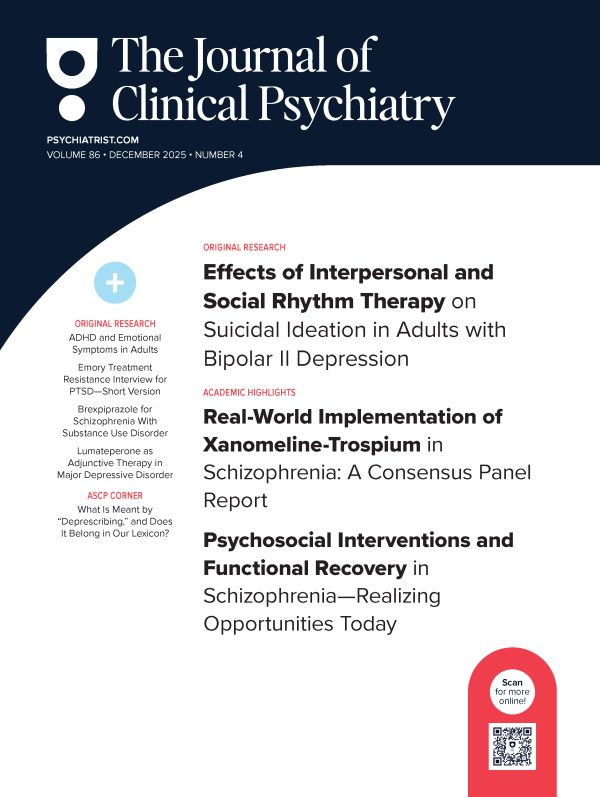Background: Patients with bipolar I or II major depression are often misdiagnosed with unipolar major depression. The goal of this study was to develop and validate a brief instrument to screen for bipolar disorder in patients actively ill with major depression.
Method: The sample consisted of subjects who enrolled in the National Institute of Mental Health-Collaborative Program on the Psychobiology of Depression-Clinical Studies from 1978 to 1981 during an episode of major depression and included 91 subjects with bipolar I major depression, 52 with bipolar II major depression, and 338 with unipolar major depression diagnosed according to Research Diagnostic Criteria. Most of the subjects were inpatients at the time of enrollment, and subjects were prospectively followed for up to 20 years. In order to create, test, and cross-validate the screening instrument, a split-sample data analytic procedure was performed. This procedure yielded 3 groups of subjects: the bipolar I index sample, the bipolar I cross-validation sample, and the bipolar II cross-validation sample. Each group included subjects with bipolar major depression and subjects with unipolar major depression. Within the bipolar I index sample, subjects with bipolar I major depression at study intake were compared with subjects with unipolar major depression at study intake on a pool of 59 sociodemographic and clinical candidate variables. The 3 variables showing the greatest disparity between bipolar I subjects and unipolar subjects were selected for the screen, the Screening Assessment of Depression-Polarity (SAD-P). The operating characteristics of the SAD-P were then examined within the bipolar I index sample, bipolar I cross-validation sample, and bipolar II cross-validation sample.
Results: The items selected for the screening instrument were (1) presence of delusions during the current episode of major depression, (2) number of prior episodes of major depression, and (3) family history of major depression or mania. The screen identified bipolar major depression with a sensitivity of 0.82 in the bipolar I index sample, 0.72 in the bipolar I cross-validation sample, and 0.58 in the bipolar II cross-validation sample. With regard to misclassifying subjects with unipolar major depression, the screen provided a positive predictive value of 0.36 in the bipolar I index sample, 0.29 in the bipolar I cross-validation sample, and 0.27 in the bipolar II cross-validation sample.
Conclusion: We suggest using the 3-item SAD-P as a preliminary screen for bipolar disorder in patients who present with an active episode of major depression.
Please sign in or purchase this PDF for $40.00.





